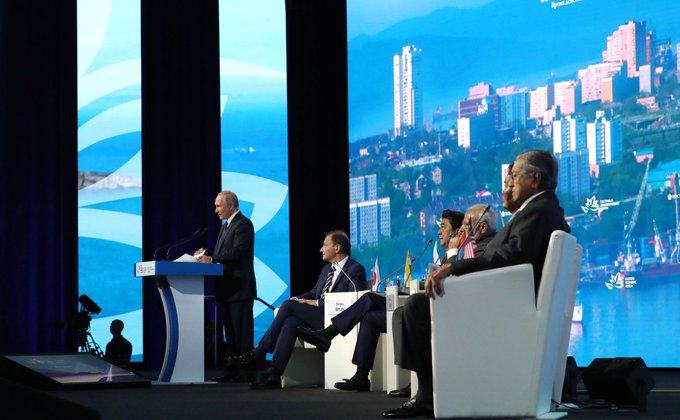Innovations in “old” industries
China is coming up with new ways to build faster trains and make steel faster (by 3,600 times)
Oct 06, 2025

My last piece focused on the world’s fastest car and humanoid made in China by BYD and Robotera. However, breakthrough innovations are happening not only in future industries like EV or robotics.
Those of us who follow technology are often blindsided by progress in the “new and shining objects” like AI, humanoid, or space exploration.
In reality, the “old and dull” stuff like trains and steel have a far more direct and immediate impact on our lives.
Chinese engineers are making breakthroughs in such century-old heavy industries as technological progress proliferates across sectors in China’s scientific modernization.

High-speed trains just get faster – at 400 km/h, China runs the world’s fastest rail
Beijing is moving full speed ahead in high-speed rail innovation, as the country prepares its newest bullet train for commercial use at 400km/h (250mph).
The CR450, developed by the China Academy of Railway Sciences, is now undergoing final performance tests.
For decades, the 350km/h (217 mph) speed mark stood as a barrier. That’s because air resistance increases rapidly at such high velocities.
Reported by South China Morning Post, Shao Jun, a researcher involved in the project, explained, “An increase in speed of 50km/h would lead to a 30 per cent rise in resistance, and greater energy consumption.”
He also pointed out that 95 percent of the resistance faced by high-speed trains comes from air.
To overcome this, the team redesigned the head of the train using principles from nature. They studied the shapes of fast-flying birds to develop a streamlined front that reduces drag by about 2.6 percent. But they didn’t stop there.
The undercarriage was the next target. This area of the train, often overlooked, holds the wheels and suspension. Engineers designed a special cladding system to cover exposed parts of the bogie.
After testing and refining this structure, the team achieved a 22 percent reduction in aerodynamic resistance.
What’s most impressive is that even with the jump to 400 km/h, the CR450 consumes the same amount of energy as the current CR400 Fuxing trains, which run at 350 km/h. That makes it not only faster, but also energy efficient.
Designing a train that travels this fast also means creating a braking system that can match. One of the biggest challenges was handling the extreme heat generated during deceleration.
The team invented a new brake material that resists high temperatures, fatigue, and deformation. Although they didn’t reveal what metals were used, researchers said it took hundreds of tests to find the right formula. It took over a year just to validate the final material’s performance.
The braking system on the CR450 is designed to stop the train from 400km/h to a full halt in 6.5 kilometers. During this deceleration, the system releases enough energy to boil 7.5 tons of water in two minutes.
With this breakthrough, China is cementing its lead in global high-speed rail development. The country’s high-speed rail network already spans 48,000 kilometers with 1,100 stations, covering nearly 80 percent of the world’s total and connecting all Chinese cities with populations over 500,000.
Iron making is getting faster – from 5-6 hours to 3-6 seconds
Steel might not sound like the sexiest subject, but it’s the backbone of nearly everything—cars, buildings, trains, wind turbines.
And for as long as anyone can remember, it’s been produced using a highly energy-intensive process involving iron ore, scorching furnaces, and, crucially, a lot of coal. Until now.
Professor Zhang Wenhai, an academician at the Chinese Academy of Engineering, and his team have invented a new method called “flash ironmaking” that can produce liquid iron in just 3 to 6 seconds.
This represents a speed increase of over 3,600 times compared to traditional blast furnaces, which take five to six hours.
The secret is a finely tuned chemical reaction. Engineers inject ultrafine iron ore powder into a superheated furnace using a vortex lance, triggering what they describe as an “explosive” reaction.
This produces searing droplets of pure, molten iron that collect at the bottom—ready to be turned into steel almost instantly by adding pure oxygen.
This process doesn’t just save time. It’s also designed to work with low-grade iron ore, something China has in abundance but has historically underutilized in favor of high-grade imports from Australia, Brazil and Africa.
The technology has already passed extensive pilot tests and is in commercial production. The vortex lance developed by the team can inject 450 tons of iron ore per hour.
When adopted on a wide scale, this new method could drastically reduce China’s dependence on imported resources. Perhaps even more significantly, it could slash the carbon footprint of steelmaking.
By eliminating the use of coke—a processed coal product traditionally used in steel production—Professor Zhang estimates the method could reduce the energy cost of steelmaking by up to a third.
That’s not just a win for factory budgets, but a big step towards China’s climate goals, particularly its ambition to hit peak carbon emissions before 2030.
Given that China makes roughly 55% of the steel in the world, any shift in how it manufactures the metal could have ripple effects far beyond its borders.
A faster, cleaner production method would not only increase its industrial competitiveness but also boost the global appeal of low-emission steel exports—a major asset in an increasingly climate-conscious marketplace.
With applications in everything from electric vehicles to urban infrastructure, a more efficient steel supply chain could give China an even sharper edge in key sectors.
For an industry known more for brute force than breakthroughs, this is a rare moment of scientific elegance—where a solution meets the scale of the challenge.





/https://www.niagarafallsreview.ca/content/dam/thestar/news/canada/2021/09/25/huawei-executive-meng-wanzhou-receives-warm-welcome-upon-return-to-china/_1_meng_wanzhou_2.jpg)



















No comments:
Post a Comment
Note: Only a member of this blog may post a comment.